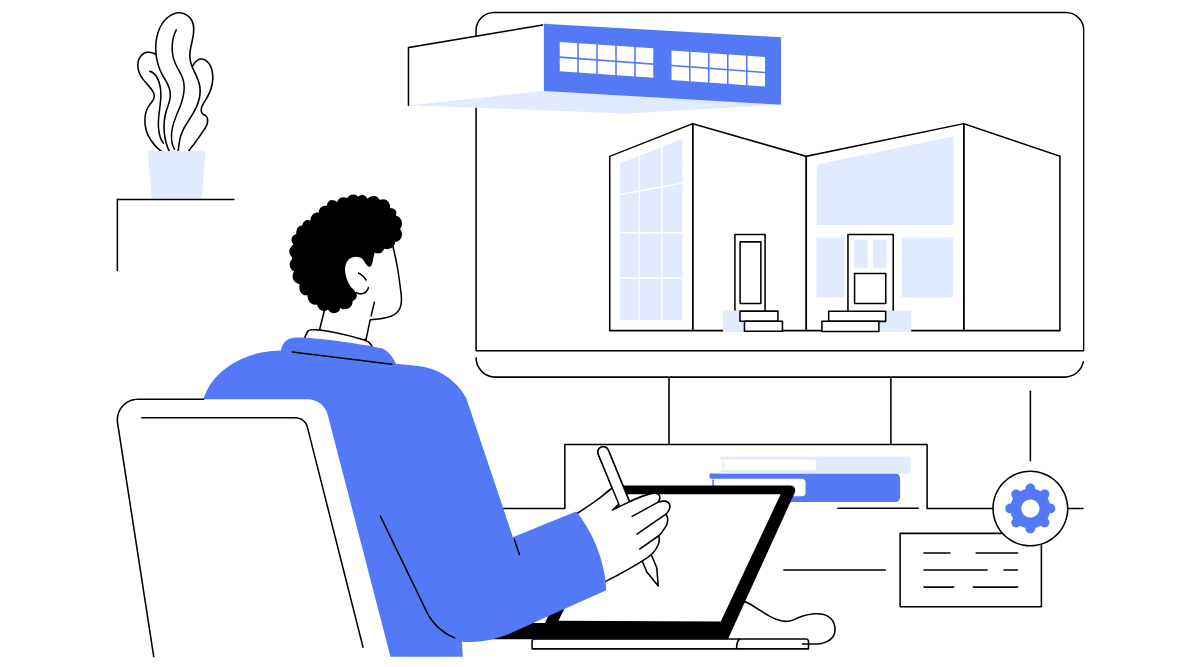Mastering AI SDR Outreach: Strategies to Convert Cold Prospects into Engaged Users
Discover effective AI SDR outreach strategies to convert cold prospects into loyal users through intelligent and automated engagement techniques.

Sales Development Representatives (SDRs) are crucial in bridging the gap between marketing and sales, particularly in B2B contexts. However, as markets evolve and digital landscapes become more complex, there’s an increasing demand for innovative solutions to enhance and automate the outreach process. Enter AI-powered SDRs—a solution that can redefine how companies engage with cold prospects.
Floworks.ai, a pioneer in intelligent automation, offers tools specifically designed to transform the way businesses undertake sales outreach. By combining artificial intelligence with human insights, Floworks.ai provides a strategic edge in converting uninterested prospects into engaged, loyal users. This blog explores the art and science behind AI SDR outreach, illuminating strategies that drive success.
Understanding AI SDR Outreach
The Role of AI in Sales Development
Artificial intelligence is reshaping sales development by automating routine tasks, analyzing large datasets, and offering insights that humans may overlook. AI tools can efficiently identify patterns, predict outcomes, and provide SDRs with data-driven guidance. This not only enhances productivity but also ensures that outreach efforts are more aligned with potential buyers’ needs.
AI's role is not to replace human SDRs but to augment their capabilities. By handling repetitive tasks such as scheduling and data entry, AI frees up SDRs to focus on building relationships and closing deals. For example, an AI system can analyze a lead’s website behavior to suggest the most effective time for outreach, thereby increasing the likelihood of engagement.
Key Benefits of AI-Powered SDR Strategies
- Efficiency: Automating time-consuming tasks allows SDRs to focus on high-value activities.
- Insights: Advanced analytics provide deeper understanding of prospect behavior and preferences.
- Personalization: AI enables highly tailored communication that resonates with individual prospects. Check our email hyper-personalization use case for more insights.
- Scalability: By automating elements of the outreach process, organizations can expand their outreach efforts without proportionally increasing costs.
Current Trends in AI SDR Outreach
The rise in AI adoption is accompanied by several noteworthy trends in SDR outreach:
- Hyper-Personalization: AI allows SDRs to tailor messages more precisely than ever before, leveraging data to create content that speaks directly to a prospect’s current challenges and needs.
- Behavioral Insights: By analyzing prospects’ online actions, AI can provide SDRs insights into when and how to approach leads most effectively.
- Integration with CRM Systems: AI tools are increasingly being integrated into Customer Relationship Management (CRM) systems, enhancing functionality and enabling more sophisticated management of sales pipelines. Learn more about our how it works here.

Identifying and Qualifying Cold Prospects
How AI Tools Assist in Prospect Identification
Identifying the right prospects is fundamental to successful outreach. AI tools contribute significantly by:
- Data Analysis: Scanning through vast datasets to identify patterns and key indicators of potential interest in products or services.
- Predictive Modeling: Utilizing historical data to forecast which prospects are more likely to convert to paying customers.
- Intent Signals: Detecting subtle behaviors that indicate a prospect’s readiness to engage, such as repeated webpage visits or specific search terms. Explore our B2B intent data use case for further information.
Criteria for Qualifying Cold Leads
Qualifying leads involves evaluating their potential to convert into customers. Criteria might include:
- Demographic Fit: Does the prospect’s industry, company size, or role align with the target market?
- Engagement Level: Has the prospect shown repeated interest in content or taken significant actions that suggest a need?
- Purchase Intent: Are there signals that indicate readiness to buy, such as downloading whitepapers or attending webinars?
Balancing Automated and Human Intervention
While AI can automate many aspects of prospect interaction, human oversight remains crucial. The best outcomes arise from a harmonious balance:
- Automated Actions: Use AI for preliminary outreach tasks, like sending introductory emails or scheduling meetings.
- Human Touch: SDRs should step in for nuanced interactions that require empathy, negotiation, or complex problem-solving. See how we streamline this process with meeting scheduling solutions.
Effective AI and human collaboration ensures that prospects feel understood and valued, rather than just a name on a list.
Crafting Personalized Outreach with AI
Creating Tailored Messages at Scale
Crafting personalized messages at scale is where AI shines. Here’s how it works:
- Data Utilization: By tapping into CRM systems and databases, AI pulls insights about prospects’ behaviors and preferences to inform message content.
- Template Optimization: AI can optimize templates based on past performance, automatically personalizing fields such as name, industry, or previously viewed content.
Utilizing Data for Personalization
Personalization requires an in-depth understanding of the prospect:
- Contextual Insights: AI tools assess contextual data, such as recent interactions or website visits, to craft messages that are relevant and timely.
- Dynamic Content: Customize content dynamically according to user preferences and behaviors, such as sending different product information based on user interests.
Avoiding Common Mistakes in AI-Driven Outreach
While AI tools provide substantial benefits, there are potential pitfalls:
- Over-Automation: Avoid fully automating all customer interactions; this can result in impersonal communication.
- Ignoring Data: Always validate AI-generated insights with real-world analysis to ensure accuracy.
- Generic Content: Ensure AI-generated messages maintain a personal touch; avoid a single template for diverse audiences.
Successful AI-driven outreach relies on a careful balance between automation and personalization, ensuring each prospect feels uniquely engaged.
With Floworks.ai, businesses can harness the power of AI to not only enhance their sales development efforts but also build meaningful connections with their prospects. As we continue this journey into AI SDR outreach, we shall explore more techniques and strategies that enhance engagement and drive conversions.
Implementing Effective AI Sales Techniques
Integrating AI into Existing Sales Frameworks
Introducing AI into your sales framework enhances the capabilities of your sales team through smarter data processing and automated workflow management. Here's how Floworks.ai facilitates this integration:
- Understanding Goals and Objectives: Before integrating AI, it's crucial to clearly define sales objectives. Whether the aim is to increase the number of qualified leads or improve conversion rates, setting defined targets ensures that AI implementations are aligned with business needs.
- Mapping Customer Journeys: AI tools can be used to analyze customer journeys, identifying key touchpoints and behaviors that signal buying intent. Floworks.ai excels at collating customer interaction data, aiding sales teams in predicting customer needs.
- Seamless CRM Integration: AI applications work best when they interface smoothly with existing CRM systems. Floworks.ai designs its tools to strengthen CRM capabilities, ensuring consistent data flow and enhanced customer insights.
- Training and Onboarding: For successful AI integration, teams must be trained to understand and use AI tools effectively. Floworks.ai provides user-friendly interfaces and comprehensive training materials to ensure that sales teams can make the most of AI capabilities.
Case Studies: Success Stories in AI SDR Outreach
Here are some illustrative examples of how companies have effectively utilized Floworks.ai's SDR outreach strategies:
- Case Study 1: Tech Startup B: This company leveraged AI-driven insights to identify high-potential leads through behavioral analysis. By automating initial outreach and follow-ups, the startup reported a 30% increase in lead conversions within three months. Refer to this detailed case study for insights.
- Case Study 2: B2B Service Provider C: With Floworks.ai’s personalized messaging systems, this company achieved enhanced lead engagement. They used AI to track prospect interactions and adjusted messaging accordingly, resulting in a significant boost in email open rates.
Floworks.ai’s approach demonstrates that employing AI in sales is not only about automation but also about better strategic decision-making.
Measuring Success: Metrics That Matter
Effective measurement is key to understanding the impact of AI SDR efforts. Important metrics include:
- Lead Conversion Rate: The proportion of leads that transition to active sales talks is a critical metric that indicates the effectiveness of both AI-driven outreach and human follow-up.
- Engagement Metrics: Monitor the open rates and response rates of AI-generated messages. Higher engagement suggests that the messaging is resonating well with prospects.
- Time-to-Contact: Evaluate how quickly your team can respond to leads, influenced by AI's ability to prioritize and route inquiries. Reduced response times usually correlate with higher conversion rates.
- Customer Acquisition Cost (CAC): Calculate the total cost associated with acquiring a new customer. A decrease indicates that AI is effectively optimizing the sales funnel.
- Customer Lifetime Value (CLV): Track the long-term value of relationships initiated via AI outreach to ensure sustained engagement and revenue generation.
Floworks.ai emphasizes accurate metric tracking to continually refine its AI strategies.
Automated Prospect Engagement Strategies
Setting Up AI-Driven Campaigns
Establishing a robust AI-driven campaign entails careful planning and execution:
- Defining Campaign Goals: Align your AI initiatives with broader marketing and sales objectives. Decide on the key performance indicators (KPIs) that matter most, like lead volume, engagement, or revenue growth.
- Audience Segmentation: Use AI tools to segment the audience based on behaviors, demographics, and purchase history. Such segmentation ensures that campaigns are targeted and tailored, enhancing relevance for each group.
- Content Strategy Development: Develop content that resonates with your audience. Floworks.ai supports content creation through AI-assisted insights that help craft messages intended to capture interest and drive action.
- Automation Setup: Implement automated workflows to manage repetitive tasks such as email follow-ups, meeting schedules, and feedback forms. Automation frees up sales teams to focus on strategic tasks. Explore our automated responses service for more details.
Maintaining Engagement Without Sacrificing Quality
Maintaining a high-quality engagement is crucial, as over-automation can lead to impersonal interactions. Here’s how to maintain it:
- Regular Content Refresh: Keep content fresh and appealing by integrating real-time data insights into your communications. AI tools like Floworks.ai offer dynamic content creation responsive to user behavior changes.
- Feedback Loops: Establish pipelines to gather and analyze prospect feedback continually. This ensures the ongoing relevance of AI-driven strategies and helps identify areas for improvement.
- Human Overlays: While AI manages routine tasks, complex inquiries should be directed to human team members capable of nuanced conversation and empathy. Manually stepping in at pivotal stages ensures prospects feel valued.
Tools and Platforms to Enhance Automation
Choosing the right tools can significantly amplify the effectiveness of AI-driven SDR outreach:
- Floworks.ai Suite: A comprehensive platform designed to automate outreach while providing critical insights into prospect behavior. It integrates seamlessly with existing systems and customizes engagement tactics.
- CRM Systems (e.g., Salesforce, HubSpot): Pair these with AI tools to enhance their functionality and improve customer relationship management through better data utilization.
- Email Marketing Tools (e.g., Mailchimp, Sendinblue): These platforms support automated communication and can be integrated with AI to craft and deliver personalized messages at scale.
- Predictive Analytics Tools (e.g., Leadspace, EverString): These help forecast which leads are most likely to convert, aiding SDRs in prioritizing their efforts effectively.
Incorporating these tools into your AI SDR strategy can lead to more efficient processes and better overall results. Floworks.ai provides extensive support and resources to maximize the potential of these platforms, ensuring successful prospect engagement.
Maximizing Cold Lead Conversion Rates
Strategies for Turning Cold Prospects into Hot Leads
To convert cold leads into hot ones, consider these effective strategies:
- Personalized First Contact: Tailor initial outreach content to address a prospect’s specific pain points or interests. Floworks.ai provides insights that can help craft these personalized messages.
- Educational Content: Share valuable resources and insights that are pertinent to your prospects’ industries or roles. Offering informative materials can build rapport and trust.
- Consistent Follow-Up: Implement automated reminders and follow-up sequences to stay top-of-mind. Ensure messages are spaced appropriately to avoid overwhelming the recipient.
Common Challenges and How to Overcome Them
Despite the benefits, a few challenges may arise:
- Data Overload: With vast amounts of data, AI strategies may feel daunting. Narrow focus to high-impact data points for actionable insights.
- Resistance to Change: Teams may resist AI adoption due to fears of replacement or process changes. Promote a collaborative environment built on leveraging AI for support rather than substitution.
- Risk of Impersonal Engagement: As mentioned, over-reliance on automation can erode personalization. Incorporate manual touchpoints where needed to maintain an authentic feel.
Optimizing Follow-Up Sequences with AI
Follow-up is critical in warming up leads:
- Behavioral Triggers: Use AI to identify behaviors that signify readiness for further engagement, such as a visited pricing page or downloaded whitepaper.
- Sequenced Communication: Develop a follow-up sequence that progressively provides more detailed content, tailored to a lead’s journey stage.
- Automation and Analysis: Automate initial follow-up steps yet regularly analyze the results to refine approaches based on engagement metrics.
Floworks.ai gives organizations the leverage they need to enhance their follow-up tactics seamlessly, encouraging prospects to advance within the sales funnel.
Navigating Ethical Considerations in AI-Driven Outreach
Maintaining Authenticity with Automated Systems
Artificial intelligence in outreach, while powerful, needs to be handled with sensitivity to maintain authenticity:
- Transparent Communication: Clearly indicate when an AI system is being used in interactions to foster trust among prospects.
- Human-Like Engagements: Ensure AI communications mimic human behaviors naturally without misleading the prospect into thinking they're not interacting with a machine.
Privacy Concerns and Compliance
Adhering to privacy laws and ethical standards is crucial:
- Data Protection: Ensure that all data collection and processing comply with GDPR, CCPA, and other relevant regulations. Floworks.ai prioritizes secure data handling practices. Learn more about our compliance measures.
- Consent Management: Fully implement consent protocols and provide easy options for leads to manage their communication preferences.
- Regular Audits: Periodically review your AI systems for compliance with regulatory changes and corporate policies.
Building Trust in AI-Powered Interactions
Building trust begins with transparency and reliability:
- Quality Assurance: Ensure that AI-generated communications are accurate, relevant, and uphold the brand image.
- Customer Education: Provide resources and education about AI tools and approaches to demystify them for customers and prospects alike.
- Responsive Support: Offer clear avenues for human contact if a prospect has questions or concerns about AI-driven interactions.
Through Floworks.ai, organizations can effectively navigate the ethical landscape of AI SDR outreach, ensuring that technology enhances, rather than hinders, trust and relationships.
Conclusion
As businesses strive to reach and engage cold prospects more effectively, the role of AI in Sales Development Representative (SDR) outreach has become increasingly significant. By automating routine processes and offering valuable insights, AI empowers SDRs to focus on more strategic tasks, ultimately resulting in more successful outreach efforts.
Floworks.ai exemplifies how AI-driven strategies can be tailored to transform cold prospects into loyal customers. By harnessing AI's capabilities, businesses can develop personalized outreach at scale, ensuring that every interaction is relevant and meaningful. However, it's crucial to maintain a balance - allowing AI to excel in data analysis and automation while leaving emotional intelligence and complex decision-making to human professionals.
Navigating ethical considerations, such as privacy and authenticity, also plays a vital role in sustaining trust in AI-powered interactions. With a mindful approach, organizations can seamlessly integrate AI into their outreach efforts, ultimately driving higher conversion rates and fostering long-lasting relationships with new customers.
In closing, the integration of AI in SDR outreach is not just about adopting new technology - it's an opportunity for businesses to adapt and thrive in an ever-evolving landscape. By leveraging both human insight and AI capabilities, organizations can not only improve their sales outreach but also support their overall growth and success. The journey with Floworks.ai and similar platforms will continue to evolve, opening up new possibilities for efficient and impactful prospect engagement.
FAQs on AI SDR Outreach Strategies
How Can AI Improve My SDR Outreach?
AI can significantly enhance your SDR outreach by automating repetitive tasks, such as sorting leads, scheduling follow-ups, and sending initial emails. This frees up your SDRs to focus on building personal relationships with prospects. AI also provides data-driven insights and predictive analytics, helping your team identify the best prospects to target and the optimal times to reach out, making your outreach efforts both efficient and effective.
Is AI Suitable for Small Businesses?
Absolutely, AI is not only for large corporations; it holds tremendous value for small businesses too. AI tools can help small businesses scale their outreach efforts without a proportional increase in headcount or costs. AI solutions can efficiently handle tasks such as data analysis and lead tracking, enabling small teams to focus on nurturing relationships with high-potential prospects, thus allowing them to compete with larger enterprises.
Can AI Provide a Personal Touch?
While AI tools are excellent at processing large amounts of data and automating communications, they can also create personalized interactions. By utilizing data from various touchpoints, AI can craft messages that resonate with an individual's specific needs and interests. However, maintaining a personal touch also involves strategically integrating human intervention, especially for complex interactions or when empathy and nuanced understanding are required.
What Are Common Challenges in AI-driven SDR Outreach?
Some common challenges include over-reliance on automation, which can lead to impersonal communications, and potential issues with data privacy and compliance. Additionally, integrating AI tools with existing systems can be complex and requires careful planning. It's important to continuously assess AI outputs to ensure they align with your business strategy and customer expectations, keeping human oversight at critical touchpoints.
How Do You Measure Success in AI SDR Outreach?
Success in AI SDR outreach is typically measured through key performance indicators (KPIs) such as conversion rates, lead qualification rates, and engagement metrics. Other useful measures include the time saved through automation, the quality of personalized interactions, and the number of successful appointments set. By consistently monitoring these metrics, businesses can refine their strategies to achieve desired outcomes and identify areas for improvement.


